Southeast Nebraska
- Bluestem SRA
- Bowling Lake
- Branched Oak SRA
- East Twin Lake
- Glenn Cunningham Lake
- Holmes Lake
- Pawnee SRA
- Rockford Lake SRA
Protect Nebraska's waters from aquatic invasive species.
Aquatic invasive species (AIS) are exotic or non-native aquatic organisms that pose a significant threat to our aquatic resources, water supplies, or water infrastructure. These organisms can be plants, fish, mussels, crayfish, invertebrates, or pathogens. With no natural enemies to keep their population in check and their ability to outcompete Nebraska’s native species for food and other resources, AIS can become widespread in a waterbody quickly. Keep reading to learn more about AIS that threaten Nebraska and how to prevent AIS from spreading.
Below are some of the key species that threaten Nebraska’s aquatic habitats. Learn about additional aquatic invasive species in Nebraska here.
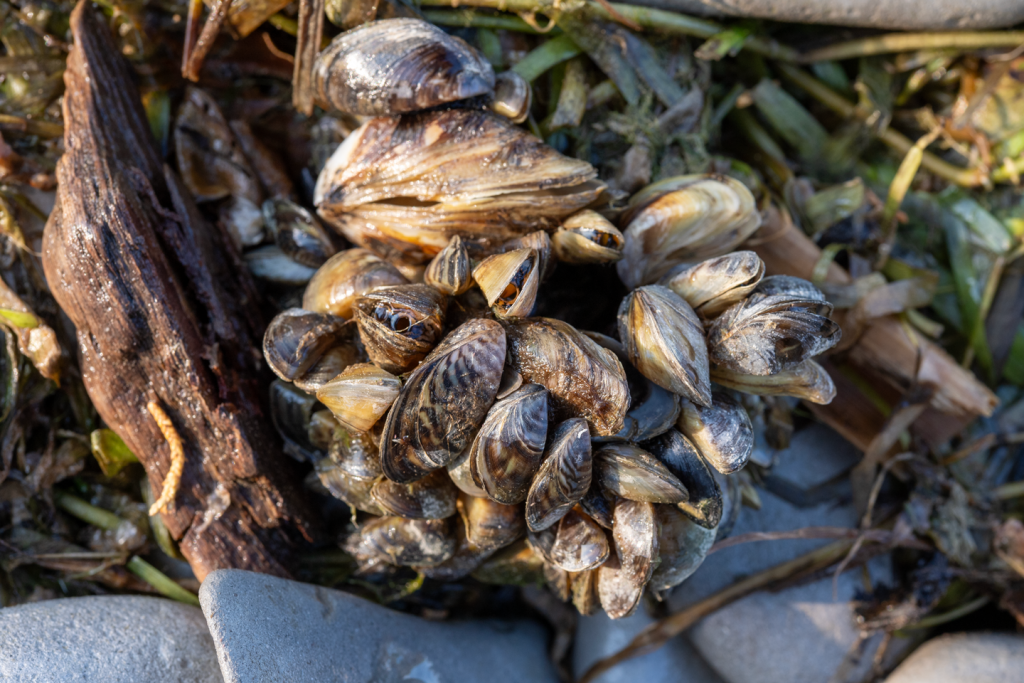
Adult zebra mussels are small — about the size of a sunflower seed — and are distinguishable by their brown and white zigzag shell pattern. They attach themselves to hard surfaces and have been known to adhere to plant stems.
Zebra mussels first arrived to North America in the 1980s and have since spread rapidly across the continent. The first documented presence of an establish zebra mussel population in Nebraska was in 2006 at the Offutt Base Lake south of Omaha. The lake was treated with copper sulfate in 2008 and 2009 to eliminate the population. The initial results appeared promising, but in the fall of 2010 adult mussels were identified and the population has since then become reestablished. Lakes Zorinsky and Cunningham were also identified as zebra mussel-positive, but eradication efforts in 2010 and 2016 were successful and both lakes are currently free of infestation.
Nebraska currently has five waterbodies with a known established population of zebra mussels:
One adult zebra mussel can filter one liter of water per day, removing much-needed nutrients that other species rely on from the waterbody. This can negatively impact Nebraska’s aquatic ecosystems by starving the food chain from the bottom up. Zebra mussels also have the potential to clog pipes and drains, negatively impacting Nebraska’s irrigation, agriculture and economy. Additionally, zebra mussels can ruin a swimming beach with their sharp shells.
Nebraska Game and Parks continues to monitor for zebra mussels through boat inspections and veliger sampling. A veliger, or larval zebra mussel, is microscopic and can’t be seen with the naked eye. A veliger can survive in a single drop of water and are therefore very easy to transfer from waterbody to waterbody which is why it is so important that boaters and anglers partake in Clean, Drain, and Dry protocols.
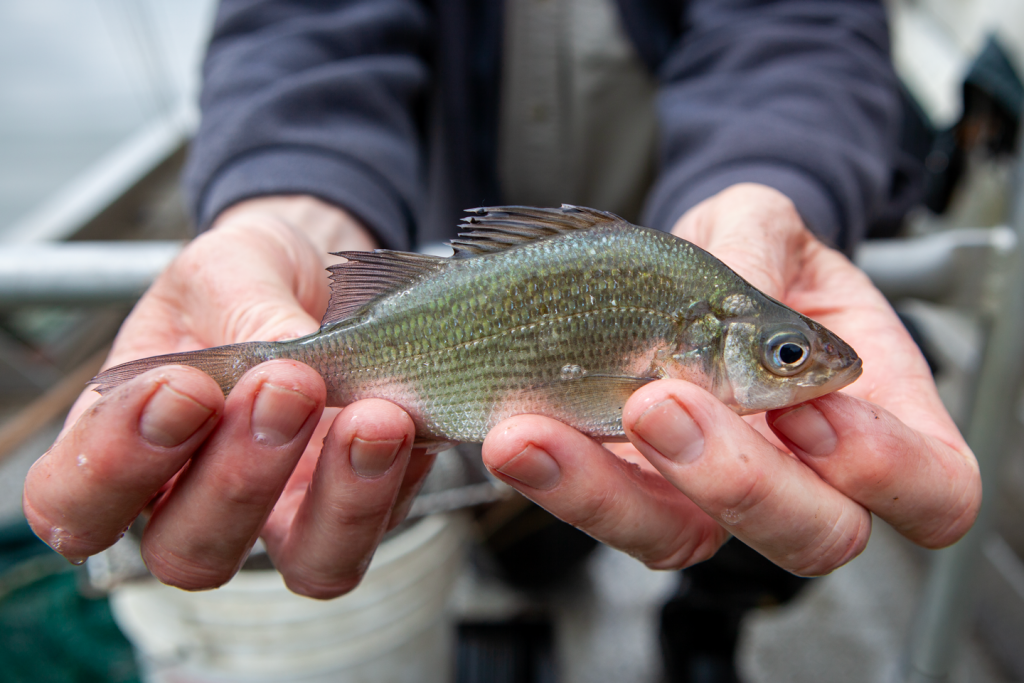
White perch are small fish, typically ranging from 7-12 inches in length. They are gray in color with a greenish tinge to their highly domed back. Since white perch are related to white bass and look similar, anglers sometimes mistake the small perch as white bass and have moved them to other water bodies, promoting their spread to lakes such as Branched Oak and Pawnee. Unlike white bass, white perch do not have gray-black horizontal stripes.
White perch are native to the east coast and were brought to Nebraska in the 1960s as an experiment to see if they would live in alkaline sandhill lakes. They were raised at the Valentine Hatchery and a stocking of largemouth bass in both Wagon Train and Stagecoach lakes south of Lincoln accidently contained white perch. Since then, lake renovations have occurred at both lakes and there is not currently a documented white perch population in either.
White perch can currently be found in several waterbodies in Nebraska:
White perch have the capability to dominate a fish community, virtually eliminating natural recruitment of most species and greatly reducing survival of hatchery stocked species. In addition to outcompeting native species for habitat and food supply, adult white perch eat native fish eggs and juveniles. The only effective management solution is to eliminate the entire fish community in invaded waters using rotenone applications.
Current regulations make it illegal to move live white perch from any waterbody for any purpose, including for use of bait.
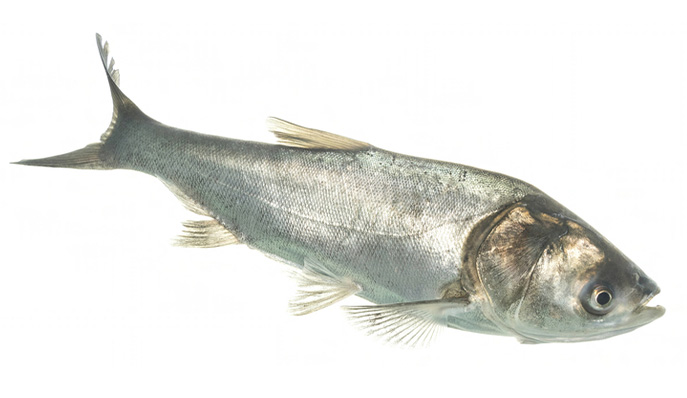
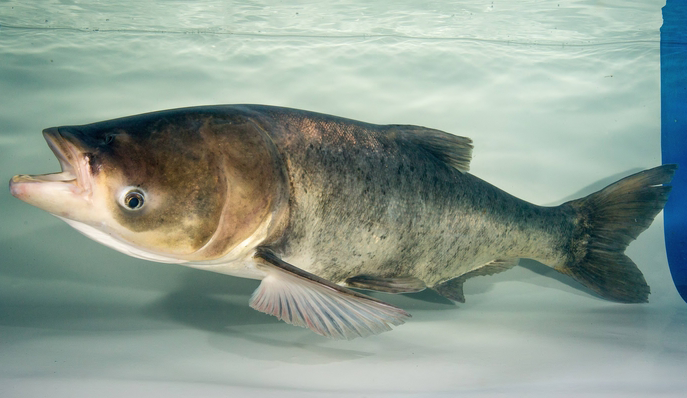
Silver and bighead carp (also referred to as Asian carp or invasive carp) can be distinguished from other species for several distinctive features. For one, the location of their eyes are located below the center line of the body, set down on the head and in line with the mouth. Also, they have no scales on their head, but silver or dark scales on their body. Silver and bighead carp vary greatly in size, with some adults getting as large as 90 pounds and 3 feet long. Juvenile silver and bighead carp are difficult to distinguish from native minnows and may accidentally be utilized as bait. This is why it is crucial to only use live bait at the waterbody from which it was harvested.
Silver and bighead carp gained access to the Mississippi River during flood events and have found their ways to rivers of the Midwest. Due to their strong swimming and jumping abilities, they can go over small barriers during flood events and gain access further upstream. Currently, they are found in the Missouri River downstream of Gavin’s Point Dam, as well as the Elkhorn, Platte and Loup Rivers.
These filter-feeding fish easily outcompete native species for habitat and food resources, damaging fisheries. Additionally, they can be dangerous for water recreationalists due to their ability to jump several feet out of the water, potentially landing on or hitting boaters and anglers.
Rusty crayfish can be distinguished from native species by their round, rust colored patches on both sides of the carapace before the tail. Adult males can grow up to 4-5 inches long, while adult females are usually smaller. Additionally, adult rusty crayfish are notably more aggressive in behavior than native crayfish species.
The rusty crayfish is one of several crayfish listed as an invasive species in Nebraska. Although native to the southern United States, rusty crayfish have been introduced into Nebraska waterbodies through their illegal use as bait. These crayfish have established populations in at least two urban ponds in Omaha and recently a population was discovered in the Missouri River below Gavin’s Point Dam.
Once introduced into an aquatic ecosystem, rusty crayfish can outcompete native crayfish, forcing them out of their habitat and reducing their food supply. Rusty crayfish can eat immense amounts of vegetation, resulting in shifts in the food web of an entire ecosystem and removing habitat from native vertebrates and invertebrates. The rusty crayfish’s highly competitive nature has the potential to reduce species abundance and damage Nebraska fisheries.
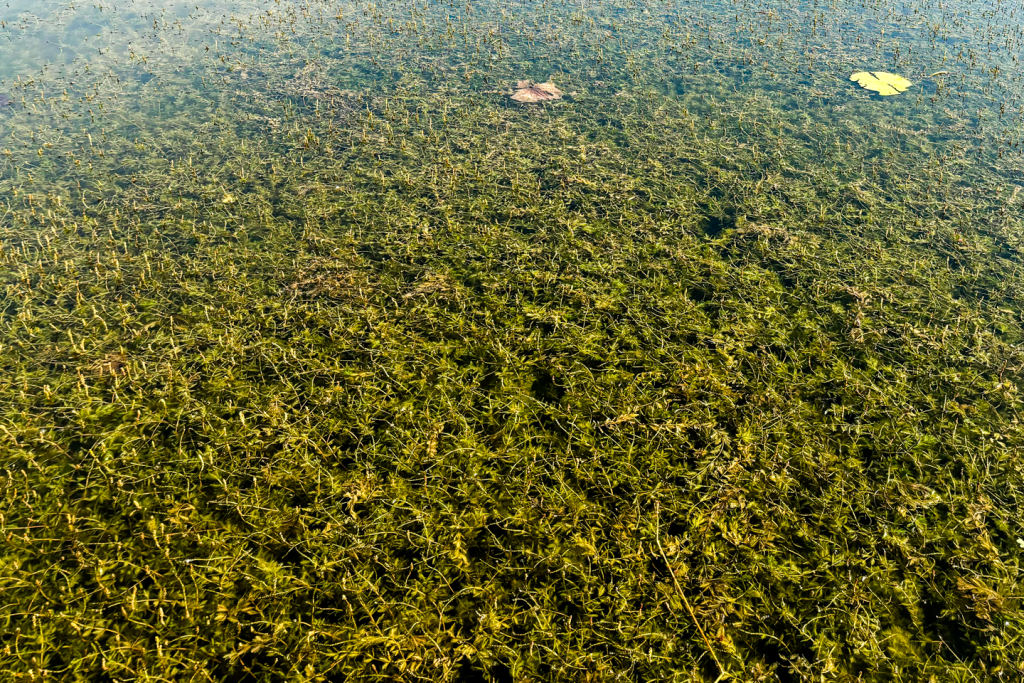
Eurasian watermilfoil stems are typically whitish pink to reddish brown with leaves that are arranged about the stem in groups of 3-6. Typically, one leaf will have more than 12 green leaflets on each side. This species can be difficult to differentiate from its native relative, Northern watermilfoil. Eurasian watermilfoil is of special concern due to its ability to hybridize and develop resistance to the products used to treat infestations. Upon hybridization, the plant will possess traits of both Eurasian and Northern watermilfoil.
Curly-leaf pondweed appears early in the season, grows fast and can be found in depths over 10 feet in clear water. This plant is vivid green in color and has leaves with a wavy, “lasagna” texture. As curly-leaf pondweed dies off later in the season, the decaying vegetation releases excess nutrients into the water, promoting algal blooms and potentially causing fish kills.
Curly-leaf pondweed and Eurasian watermilfoil are suspected to have been introduced to Nebraska by people dumping their unwanted aquariums. Both plants are spread via fragmentation, meaning only a small piece of the plant needs to enter a waterbody for it to be establish and reproduce. They are often moved from waterbody to waterbody by boaters and anglers
Both curly-leaf pondweed and Eurasian watermilfoil are submergent vegetation, meaning that they grow below the water’s surface and are rooted in sediment. These weeds grow very quickly and outcompete native vegetation, as well as restrict light permeation to the bottom of waterbodies. Water recreation and boater and angler access can be prohibited due to the dense growth of curly-leaf pondweed and Eurasian watermilfoil. Neither is suitable as native fish habitat due to its dense growth. Both plants spread through fragmentation, meaning only a small piece of the plant needs to enter a waterbody for it to establish and reproduce.
Four categories have been established for designated aquatic invasive species that are found in Nebraska. These categories can be changed upon Commission approval.
Category 1 invasive species are those that have not yet been sampled in Nebraska and are considered a high threat.
Currently listed as Category 1:
Category 2 invasive species are those that are currently present in Nebraska but with limited distribution. They are considered highly unwanted species and all efforts should be taken to prevent the expansion of their population.
Currently listed as Category 2:
Category 3 invasive species are those that are well established in Nebraska and total elimination is impossible. Local removal and control is the best that can be expected.
Currently listed as Category 3:
Category 4 invasive species are those that are regulated by the Nebraska Department of Agriculture as noxious plant species.
Currently listed as Category 4:
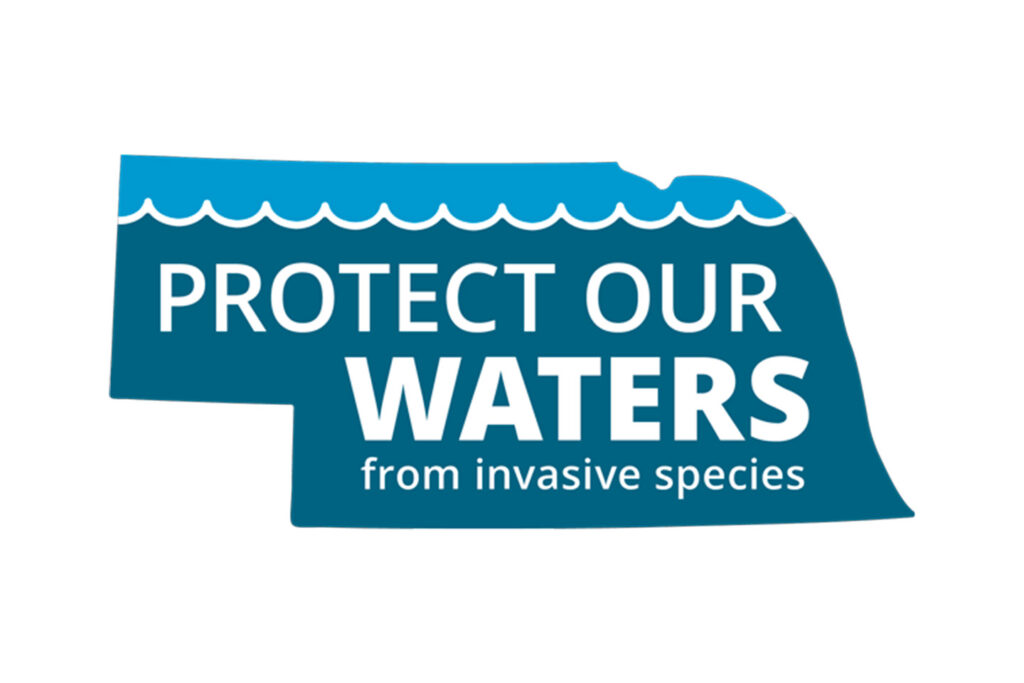
Fish and wildlife biologists rely heavily on the public for help preventing the spread of aquatic invasive species. In addition to cleaning, draining and drying your watercrafts, we need your assistance reporting aquatic invasive species found in Nebraska.
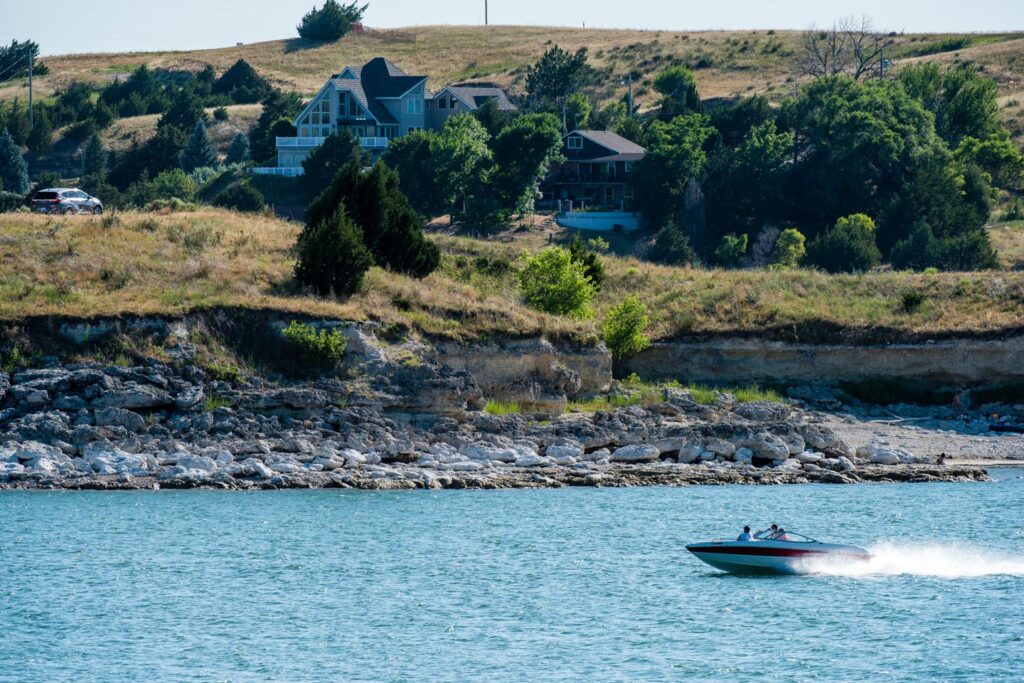
All resident and non-resident boaters are required to pay a fee to fund programs aimed at combating aquatic invasive species.
Boaters who register their motorized watercraft in Nebraska are required to pay $5 in addition to their three-year boater registration fee. Boaters who register their motorized watercraft in any other state will be required to obtain a $18 Aquatic Invasive Species Stamp each year that they boat in Nebraska. This stamp is available for purchase online. A temporary stamp may be purchased at some state parks and recreation areas.
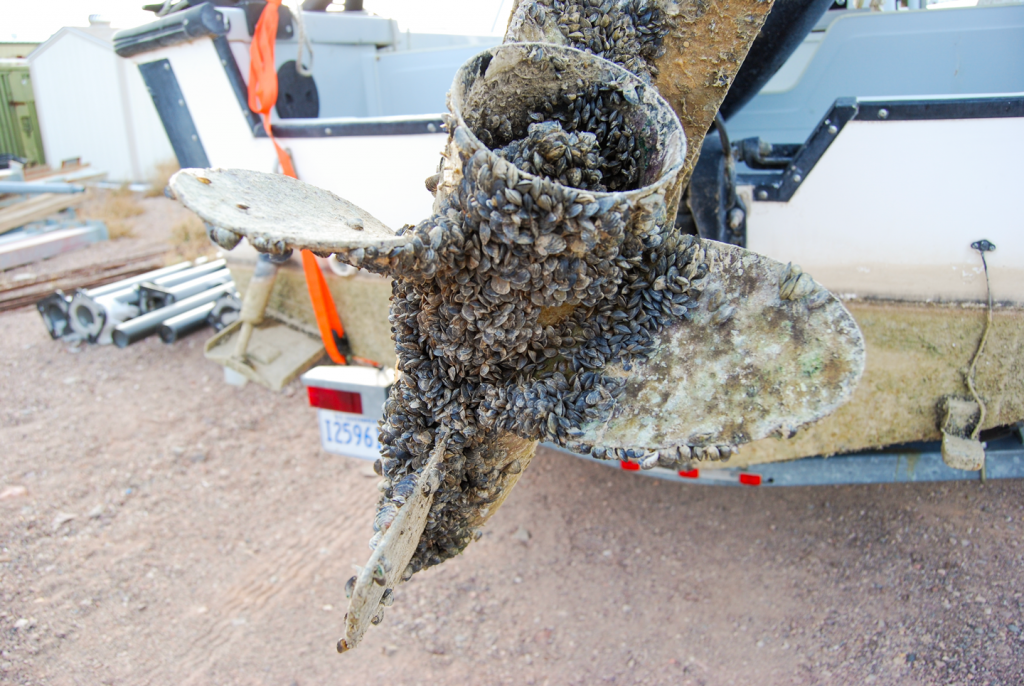
Nebraska Game and Parks conducts watercraft inspections annually during summertime to prevent AIS spread. In 2024, Nebraska accomplished a state record number of more than 8,000 watercraft inspections across the state.
Because some AIS can survive outside of water for up to two weeks, it is important to take preventative action against their spread. Anglers and boaters must:
CLEAN your watercraft, trailer, angling gear and other equipment. Remove all aquatic vegetation and animal species from your equipment.
DRAIN your watercraft at the ramp by removing the boat plug and draining all live wells and ballast tanks.
DRY your watercraft, trailer and other equipment for at least 7 days before visiting another waterbody.

Did you know it is illegal to release aquarium pets or aquarium contents into the wild? For the health of your pet, and the safety of our native wildlife, it’s NEVER okay to let your pets loose. Most released pets do not survive, and many suffer before they die. If it does survive, your pet becomes an invasive species that native wildlife may not have the defenses to compete against.
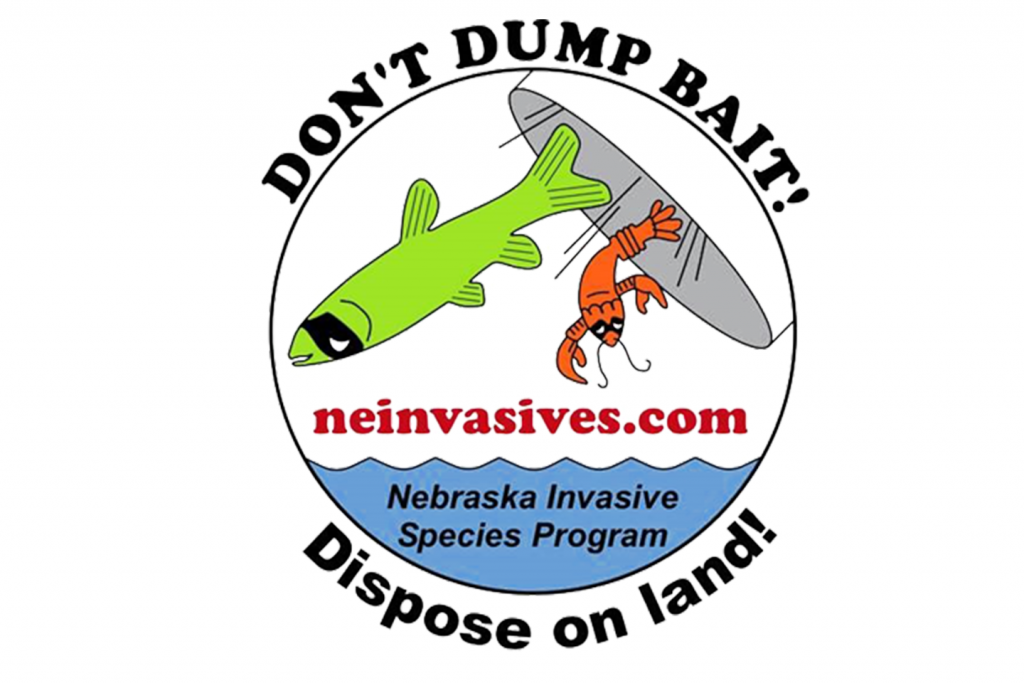
Anglers should take care to properly dispose of bait by emptying bait buckets on dry land, away from waterbodies or in a trash receptacle. It is unlawful to release any aquatic species into a waterbody other than the one from which it was harvested. Doing so can promote the spread of AIS. Moving a live organism from one waterbody to another is illegal, even if you are planning to use the organism as bait.
Aquatic invasive species are introduced to new environments by people, sometimes intentionally but most often by mistake. They are commonly referred to as “aquatic hitchhikers” since they are often transported from place to place via adherence to watercraft, angling equipment, and other recreational gear. As aquatic invasive species have been introduced into Nebraska, this is their most common mode of introduction within the state.
Plant species, like Eurasian watermilfoil and curly-leaf pondweed, may spread via fragmentation, which means that only a small piece of the plant needs to be introduced into a waterbody to establish an entire population. Boaters and anglers should always check their equipment, especially small, hard to reach places, to ensure there are not plant species attached.
Other species, like juvenile zebra mussels, are microscopic. One zebra mussel larva is microscopic and can live in a single drop of water for up to two weeks. Boaters with contaminated bilges or livewells may introduce zebra mussels, or anglers dumping bait buckets containing water collected from somewhere other than that waterbody.
Always following Clean, Drain, and Dry protocols, dumping bait buckets on dry land instead of into the water, and refraining from releasing aquariums and aquarium pets into the wild are ways to prevent the spread of aquatic invasive species.
The 2012 Nebraska Legislature passed a bill that created the Nebraska Invasive Species Council and gave the Nebraska Game and Parks Commission ability to establish regulations to prevent the introduction and spread of listed aquatic invasive species, including performing state-wide boat inspections.
The main emphasis of these regulations targets species that can be spread via boats and trailers. Of this legislation, it is important for boaters and anglers to note that:
Nebraska administrative code regarding aquatic invasive species can be found here.
Fishing Permits
Purchase stamps, resident and non-resident fishing permits here.